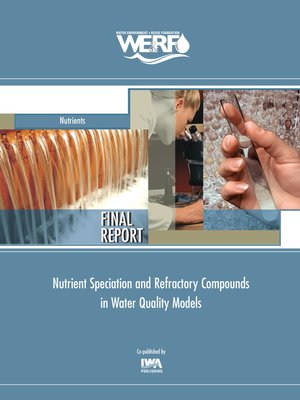Nutrient Speciation and Refractory Compounds in Water Quality Models
ebook ∣ WERF Research Report Series, Book NUTR1R06aa · WERF Research Report
By David Clark

Sign up to save your library
With an OverDrive account, you can save your favorite libraries for at-a-glance information about availability. Find out more about OverDrive accounts.
Find this title in Libby, the library reading app by OverDrive.



Search for a digital library with this title
Title found at these libraries:
| Library Name | Distance |
|---|---|
| Loading... |
Water quality modeling efforts are designed to provide an understanding of watershed conditions to support management efforts that include control of point and nonpoint sources (NPS). Nitrogen (N) and phosphorus (P) speciation is an important area of nutrient research, both in terms of biodegradability in wastewater treatment and bioavailability in the water environment. Water quality modeling may not be reflecting all that is known about point source effluent N and P from treatment facilities that reduce the total amount of nutrients discharged and also change N and P speciation and reduce bioavailability. WERF research into advanced levels of nutrient removal treatment is revealing new information about N and P speciation and reduced bioavailability of the N and P remaining after advanced treatment.Many of the more sophisticated mechanistic water quality models have the ability to simulate N and P species, and to some degree reflect refractory organic nutrient inputs and their subsequent degradation. Selecting water quality models with the capability of simulating nutrient species, and gathering monitoring data to characterize nutrient species and refractory compounds, is important to support enhancements in modeling.







